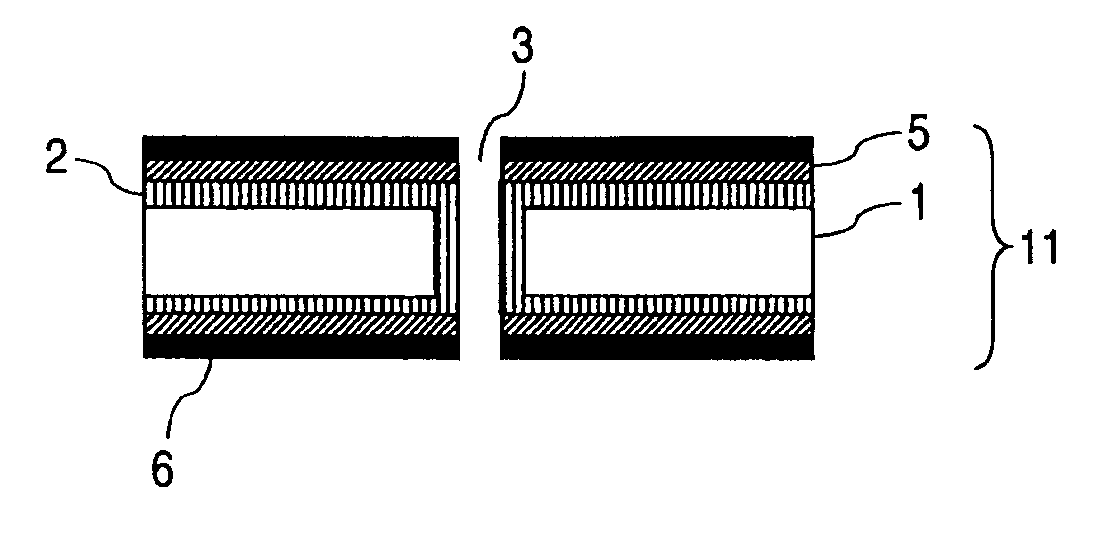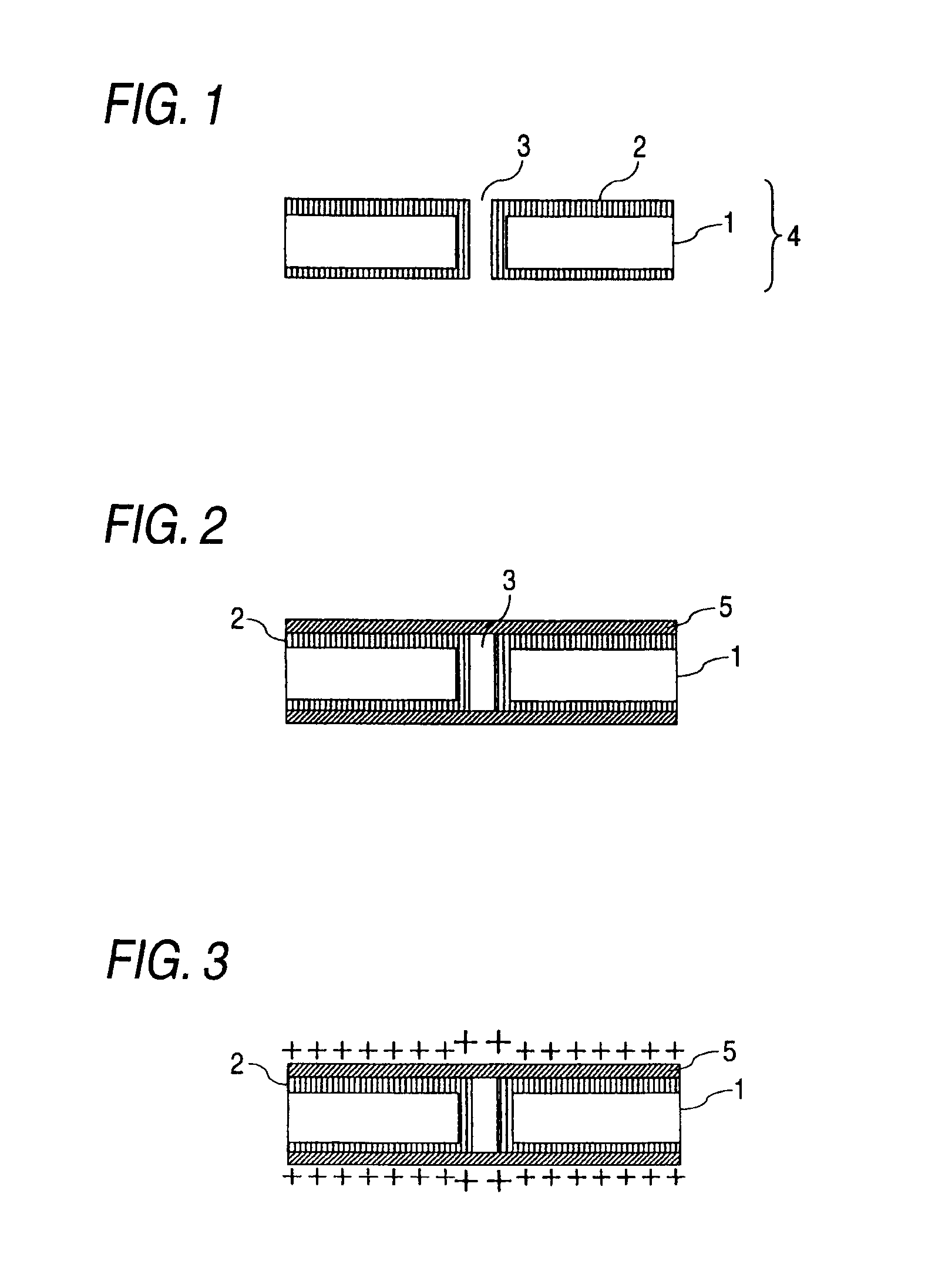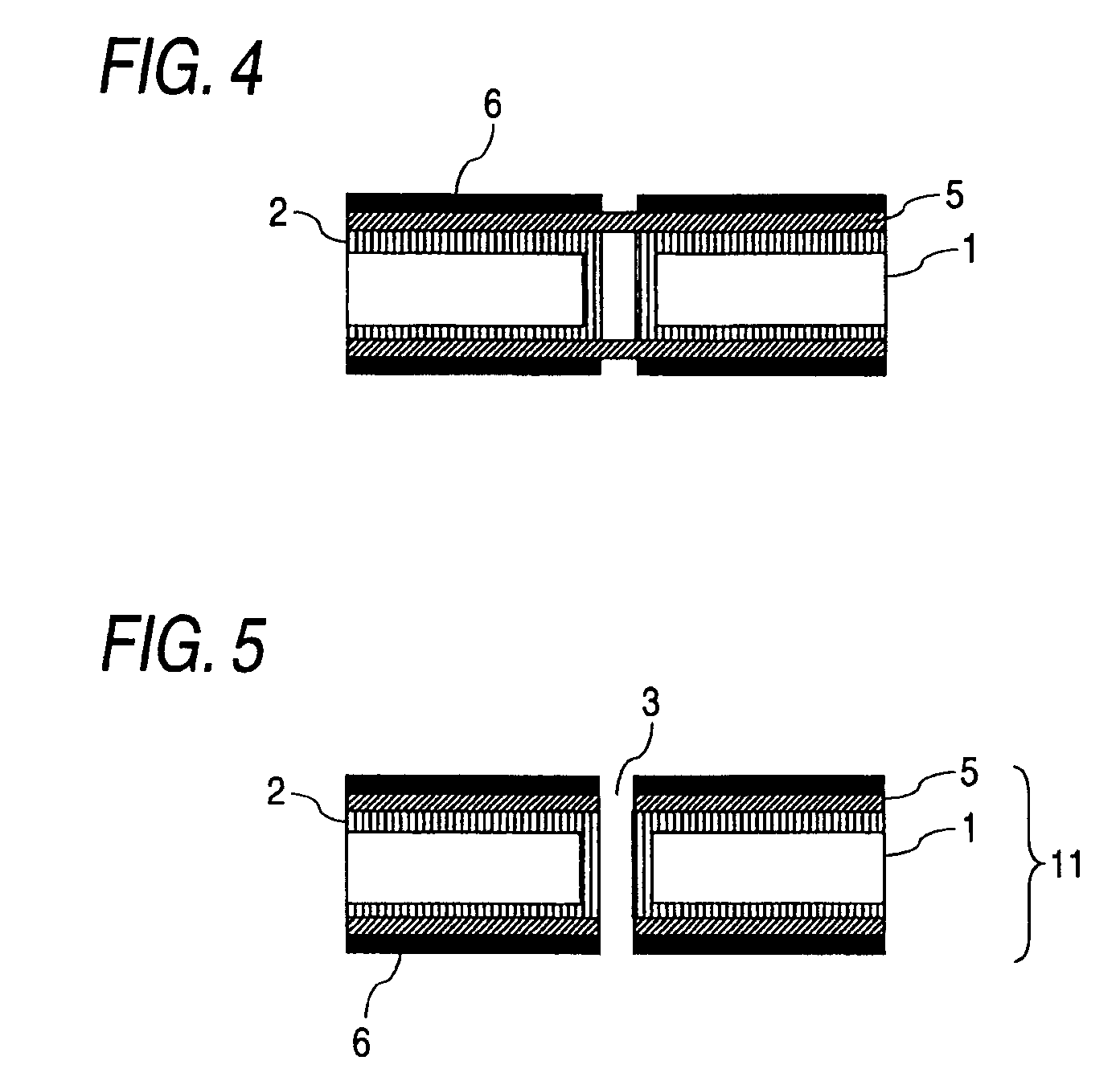Circuit board manufacturing method and circuit board
a manufacturing method and circuit board technology, applied in the direction of double resist layer, conductive pattern formation, printed element electric connection formation, etc., can solve the problems of large number of circuit boards, limited precision in alignment, and inability to form small holes around the whole outer periphery of holes, etc., to achieve the effect of easy manufacturing
- Summary
- Abstract
- Description
- Claims
- Application Information
AI Technical Summary
Benefits of technology
Problems solved by technology
Method used
Image
Examples
example
Example 1
[0243] By using a coating solution having a composition shown in Table 1, a resin film for a first resin layer (a thickness of the film after drying is 15 μm) formed by an alkali soluble resin was manufactured on a polyethylene terephthalate film having a thickness of 25 μm (manufactured by Mitsubishi Chemical Polyester Film Co., Ltd.) by using a curtain coating method.
TABLE 1n-butyl methacrylate / n-butyl acrylate / 15parts by massmethacrylic acid copolymer (molecular weightof 20000, monomer composition ratio (mass) =4 / 3 / 3)dibutyl phthalate2.5parts by mass1-methoxy-2-propanol82.5parts by mass
[0244] As a circuit forming substrate, a copper-clad laminate including a copper foil having a thickness of 12 μm in a size of 200×200×0.4 mm was used to form a plurality of through holes having a diameter of 0.15 mm by means of a drill, and nonelectrolytic copper plating-electrolytic copper plating processings (OKUNO CHEMICAL INDUSTRIES CO., LTD., OPC Process M) was executed to form a ...
example 2
[0247] By using a coating solution having the composition shown in the Table 1, a resin film for a first resin layer (a thickness of the film after drying is 15 μm) formed by an alkali soluble resin was manufactured on a polyethylene terephthalate film having a thickness of 25 μm (manufactured by Mitsubishi Chemical Polyester Film Co., Ltd.) by using a curtain coating method.
[0248] As a circuit forming substrate, a copper-clad laminate including a copper foil having a thickness of 12 μm in a size of 200×200×0.4 mm was used to form a plurality of through holes having a diameter of 0.15 mm by means of a drill. Next, the first resin layer was laminated on the 120° C. preheating condition by using a laminator for a dry film. Then, a polyethylene terephthalate film was peeled at room temperature. Thereafter, the polyethylene terephthalate film was peeled at the room temperature and heating was carried out at 80° C. for one minute to eliminate an unevenness of peeling and charging on the...
example 3
[0251] By using a coating solution having the composition shown in the Table 1, a first resin layer (a thickness of the film after drying is 15 μm) formed by an alkali soluble resin was manufactured on a polyethylene terephthalate film having a thickness of 25 μm (manufactured by Mitsubishi Chemical Polyester Film Co., Ltd.) by using a curtain coating method.
[0252] A copper-clad laminate including a copper foil having a thickness of 12 μm in a size of 200×200×0.4 mm was used to form a plurality of through holes having a diameter of 0.15 mm by means of a drill, and nonelectrolytic copper plating-electrolytic copper plating processings (OKUNO CHEMICAL INDUSTRIES CO., LTD., OPC Process M) was executed to form a copper plated layer having a thickness of approximately 12.5 μm on a surface and internal walls of the through holes. Next, the first resin layer was thermo-compression bonded on the 120° C. preheating condition by using a laminator for a dry film. Then, a polyethylene terephth...
PUM
 Login to View More
Login to View More Abstract
Description
Claims
Application Information
 Login to View More
Login to View More - R&D
- Intellectual Property
- Life Sciences
- Materials
- Tech Scout
- Unparalleled Data Quality
- Higher Quality Content
- 60% Fewer Hallucinations
Browse by: Latest US Patents, China's latest patents, Technical Efficacy Thesaurus, Application Domain, Technology Topic, Popular Technical Reports.
© 2025 PatSnap. All rights reserved.Legal|Privacy policy|Modern Slavery Act Transparency Statement|Sitemap|About US| Contact US: help@patsnap.com



